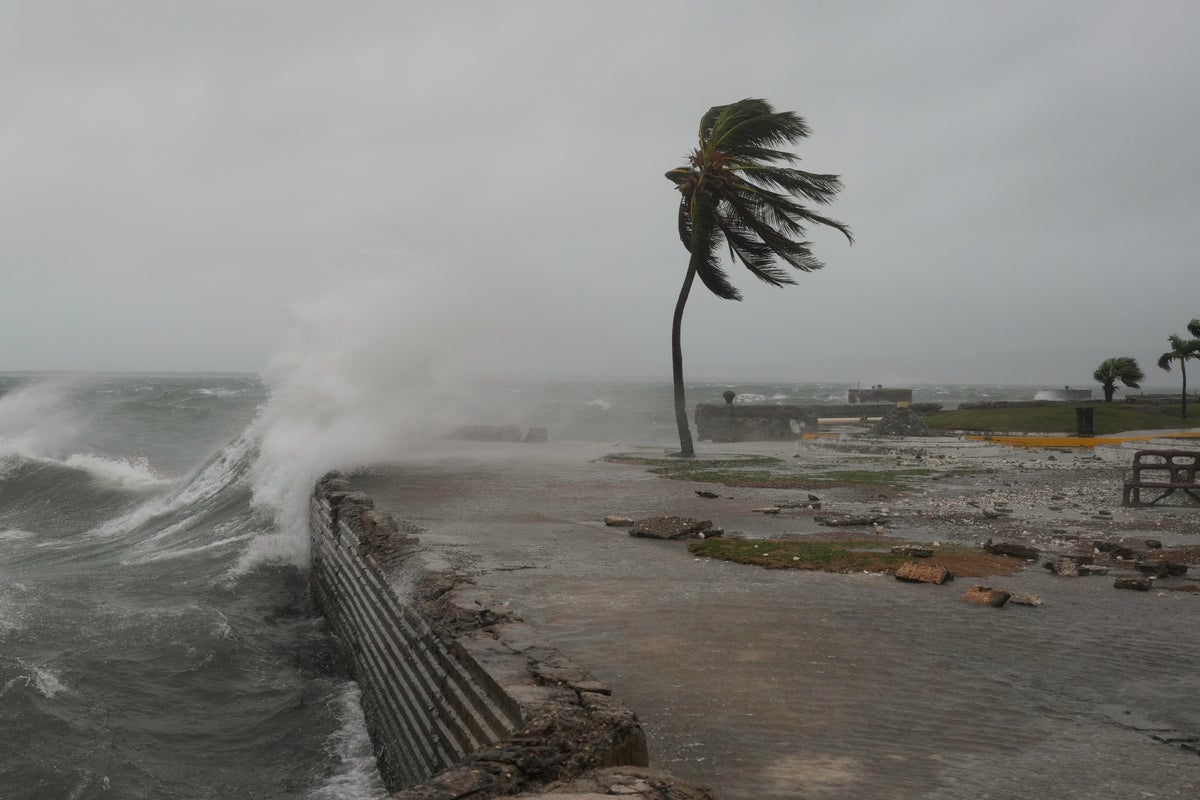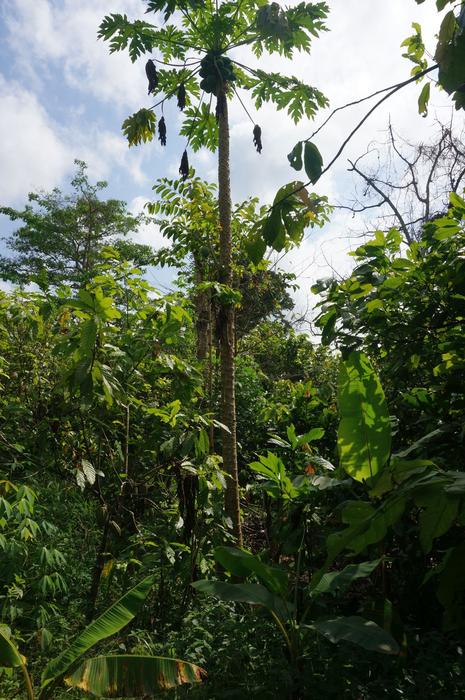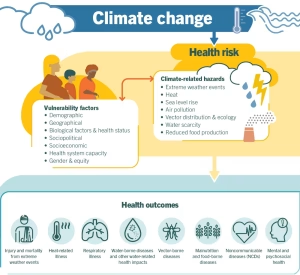Money to fight climate crisis falls by £1.5 billion – and aid cuts will make things far worse – The Independent

Report on the Climate Adaptation Finance Gap and its Impact on Sustainable Development Goals
Introduction: A Critical Setback for Climate Action (SDG 13)
Recent extreme weather events, such as Hurricane Melissa in the Caribbean, highlight the severe impact of the climate crisis on developing nations. A new report from the United Nations Environment Programme (UNEP), the ‘2025 Adaptation Gap’ report, reveals a concerning trend that directly undermines global efforts to achieve Sustainable Development Goal 13 (Climate Action). Despite escalating climate impacts, international financial flows for climate adaptation in developing countries are decreasing, creating a significant gap between required funding and available resources.
Analysis of the Financial Shortfall
The UNEP report presents stark figures illustrating the decline in financial support for climate adaptation, which encompasses measures from constructing flood defences to distributing drought-resistant seeds.
- Public international adaptation finance for developing countries fell from $28 billion in 2022 to $26 billion in 2023.
- Future annual adaptation finance needs are estimated to be between $310 billion and $365 billion by 2035.
- The current financial flow is approximately 12 to 14 times less than the projected requirements.
The short-term outlook is further compromised by overseas aid budget cuts in countries like the United Kingdom and the United States, exacerbating the financial gap and jeopardizing the resilience of vulnerable nations.
Implications for Multiple Sustainable Development Goals
The failure to adequately finance climate adaptation extends beyond SDG 13, threatening progress across the 2030 Agenda for Sustainable Development. The consequences of this funding gap directly impact several interconnected goals:
- SDG 1 (No Poverty) & SDG 10 (Reduced Inequalities): Climate-related disasters disproportionately affect the poorest communities, pushing them further into poverty and widening the inequality gap between developed and developing nations.
- SDG 2 (Zero Hunger): Without funding for adaptive agricultural practices, extreme weather events like droughts and floods increasingly threaten food security and progress towards zero hunger.
- SDG 11 (Sustainable Cities and Communities): A lack of investment in climate-resilient infrastructure, such as coastal protection and flood defences, leaves urban and rural communities highly vulnerable to climate hazards.
- SDG 17 (Partnerships for the Goals): The reduction in aid represents a failure in global partnerships, undermining the international cooperation necessary to address shared global challenges like climate change.
The Broader Context of Global Climate Efforts
The issue of adaptation finance is a key agenda item for the upcoming COP30 climate summit. However, the challenge is compounded by insufficient progress on climate mitigation. A recent UN assessment found that only 64 countries have submitted new plans to reduce carbon emissions. These plans, covering just 30 percent of global emissions, are projected to result in only a 10 percent reduction by 2035, a figure drastically short of what is needed to limit global warming to the 1.5°C threshold deemed critical by scientists. This mitigation shortfall places even greater pressure on the need for robust adaptation measures, which remain critically underfunded.
Conclusion: An Urgent Call for Realigned Global Priorities
As UN Secretary-General António Guterres stated, “Adaptation is not a cost – it is a lifeline.” The widening gap between adaptation needs and financial commitments represents a profound threat to global stability, climate justice, and the achievement of the Sustainable Development Goals. Closing this gap is imperative to protect lives, build resilience in the world’s most vulnerable regions, and create a sustainable future for all.
Analysis of the Article in Relation to Sustainable Development Goals
1. Which SDGs are addressed or connected to the issues highlighted in the article?
- SDG 13: Climate Action: This is the central theme of the article. It directly discusses the impacts of climate change (extreme weather), the need for adaptation and mitigation, and the critical role of climate finance. The article focuses on the “Adaptation Gap” and the failure to meet emissions reduction targets to limit global warming to 1.5°C.
- SDG 17: Partnerships for the Goals: The article’s focus on international financial flows, specifically foreign aid from developed countries (like the US and UK) to developing countries for climate adaptation, is a core component of this goal. It highlights the breakdown of these partnerships, with aid budgets being cut and commitments not being met.
- SDG 1: No Poverty: The article emphasizes that the devastation from climate-related disasters like “Hurricane Melissa” primarily affects developing countries. These events destroy infrastructure, livelihoods, and homes, pushing vulnerable populations further into poverty and hindering poverty reduction efforts.
- SDG 11: Sustainable Cities and Communities: The article mentions specific adaptation measures such as the “construction of flood defences” and protecting coasts. These actions are directly related to making human settlements more resilient to the impacts of climate-related disasters discussed in the text, such as storms and floods.
2. What specific targets under those SDGs can be identified based on the article’s content?
-
Under SDG 13 (Climate Action):
- Target 13.1: Strengthen resilience and adaptive capacity to climate-related hazards and natural disasters in all countries. The article highlights the increasing frequency and intensity of “storms, floods, wildfires, or droughts” and discusses adaptation measures like “mangrove forests to protect coasts” and “construction of flood defences” which are essential for building resilience.
- Target 13.2: Integrate climate change measures into national policies, strategies and planning. The article mentions that “only 64 countries have submitted new plans to cut carbon,” which directly relates to the integration of climate mitigation plans into national policy. It also notes these plans are insufficient.
- Target 13.a: Implement the commitment undertaken by developed-country parties… to a goal of mobilizing jointly $100 billion annually… to address the needs of developing countries. The article’s main point is the failure to meet this commitment, citing that foreign aid for adaptation “fell from $28 billion… to $26bn” and that the required finance is “12 to 14 times greater than what is currently available.”
-
Under SDG 17 (Partnerships for the Goals):
- Target 17.2: Developed countries to implement fully their official development assistance commitments. The article directly points to a failure in this area by stating that countries “including the US and UK have been cutting their overseas aid budgets.”
- Target 17.3: Mobilize additional financial resources for developing countries from multiple sources. The article discusses the shrinking pool of money for climate adaptation and the massive gap between available funds ($26 billion) and the estimated need ($310-365 billion), showing a failure to mobilize these resources.
-
Under SDG 1 (No Poverty):
- Target 1.5: By 2030, build the resilience of the poor and those in vulnerable situations and reduce their exposure and vulnerability to climate-related extreme events. The article’s description of “devastation in developing countries” caused by hurricanes and other extreme weather events directly addresses the vulnerability of these populations, and the call for adaptation finance is a call to build their resilience.
-
Under SDG 11 (Sustainable Cities and Communities):
- Target 11.5: By 2030, significantly reduce the number of deaths and the number of people affected and substantially decrease the direct economic losses… caused by disasters. The article’s mention of “devastation” from Hurricane Melissa and other disasters like floods directly relates to the economic and human losses this target aims to reduce.
3. Are there any indicators mentioned or implied in the article that can be used to measure progress towards the identified targets?
- Financial Flows for Climate Adaptation: The article provides specific quantitative data that serves as a direct indicator for Targets 13.a and 17.3. It states that “Foreign aid available for developing countries for climate adaptation fell from $28 billion (£21bn) in 2022 to $26bn in 2023.” It also provides a future estimate of need: “$310-365 billion in adaptation finance per year by 2035.”
- National Climate Action Plans: As an indicator for Target 13.2, the article mentions that “only 64 countries have submitted new plans to cut carbon.” This number serves as a direct measure of how many countries are integrating climate measures into their national planning.
- Greenhouse Gas Emissions Reductions: The article implies an indicator for the effectiveness of national plans (Target 13.2) by stating that the current plans “would mean that global emissions of CO2 would only fall by around 10 per cent by 2035,” which is insufficient. This percentage reduction is a key performance indicator.
- Global Temperature Increase: The article mentions a critical global indicator for overall climate action (SDG 13) by stating, “Last year, the 1.5C threshold was breached for a whole year for the first time.” This serves as a benchmark for the success or failure of global climate mitigation efforts.
- Impact of Disasters: While not providing specific numbers, the article implies indicators for Targets 1.5 and 11.5 by repeatedly mentioning the “devastation” caused by extreme weather events like hurricanes, storms, and floods in developing countries. This implies metrics such as economic losses and the number of people affected by such disasters.
4. Table of SDGs, Targets, and Indicators
| SDGs | Targets | Indicators |
|---|---|---|
| SDG 13: Climate Action | Target 13.a: Implement the commitment by developed countries to mobilize climate finance for developing countries. | The total amount of foreign aid for climate adaptation, which fell from $28 billion in 2022 to $26 billion in 2023. |
| SDG 13: Climate Action | Target 13.2: Integrate climate change measures into national policies, strategies and planning. | The number of countries that have submitted new plans to cut carbon (mentioned as “only 64 countries”). |
| SDG 13: Climate Action | Overall goal to limit global warming. | The global temperature increase relative to pre-industrial levels (mentioned as the “1.5C threshold was breached for a whole year”). |
| SDG 17: Partnerships for the Goals | Target 17.2: Developed countries to implement fully their official development assistance commitments. | Actions on overseas aid budgets by developed countries (mentioned as the US and UK “have been cutting their overseas aid budgets”). |
| SDG 1: No Poverty & SDG 11: Sustainable Cities and Communities | Target 1.5 & 11.5: Build resilience and reduce vulnerability and economic losses from climate-related extreme events and disasters. | The level of “devastation” in developing countries caused by extreme weather events like Hurricane Melissa, storms, and floods (implied indicator). |
Source: independent.co.uk
What is Your Reaction?
 Like
0
Like
0
 Dislike
0
Dislike
0
 Love
0
Love
0
 Funny
0
Funny
0
 Angry
0
Angry
0
 Sad
0
Sad
0
 Wow
0
Wow
0

















































.jpg.webp?itok=0ZsAnae9#)





:focal(1500,1000)/https://media.globalcitizen.org/a6/9a/a69a4720-d8a1-4715-b596-18738d03c05c/rotary_polio_hero_image.jpg?#)





















